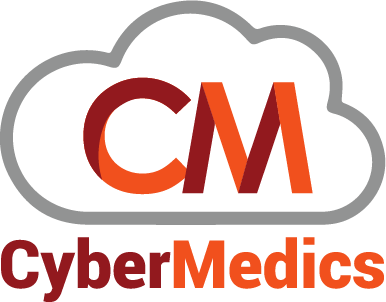
Custom Software Engineering Services: Boost Your Business Efficiency
In today’s fast-paced business world, companies are constantly seeking ways to streamline their operations and gain a competitive edge. Custom software engineering services are a powerful solution to these challenges. By developing tailored software applications that address specific business needs, organizations can boost business efficiency and productivity, optimize their processes, enhance decision-making, and ultimately drive growth.
Custom software development projects offer numerous advantages over off-the-shelf solutions. They allow businesses to align their software applications with their unique objectives and workflows, resulting in improved operational efficiency and reduced costs in the long run. From streamlining business processes to enabling real-time data analysis, custom software solutions provide the flexibility and scalability needed to adapt to changing market demands. This article will explore the key aspects of custom software engineering services, including assessing business needs, best practices for development, and overcoming common challenges in software projects.
Assessing Your Business Needs for Custom Software
A thorough needs assessment serves as the cornerstone of a successful custom software development project. This critical phase involves a deep exploration of the challenges and intricacies that the software aims to address. By conducting this assessment before development begins, organizations can gain a comprehensive understanding of their requirements, setting the stage for a successful and profitable end product.
Identifying Pain Points
To ensure custom software drives real business value, it’s crucial to identify the specific pain points within an organization. Common challenges that teams often face include:
· Inefficient workflows and redundant processes
· Lack of integration between different systems
· Poor data management and accessibility
· High operational costs
· Inadequate user experience and usability issues
· Limited scalability and flexibility of existing software
· Difficulty in tracking and analyzing performance metrics
Analyzing Workflow Inefficiencies
Workflow mapping is an essential tool to diagram processes, tasks, activities, systems, and decisions needed to produce a certain outcome, from end to end. This activity makes both simple and complex processes easier to understand and provides valuable insights for improvement. Benefits of workflow mapping include:
Better understanding of critical activities and recognition of problems and blocks to achieving goals
Identification of unnecessary steps, duplicate steps, and inefficiencies
Improved efficiency by revealing extra steps and valuable workarounds
Reduction of speculation about how things work and revelation of current processes
Connection of steps and job details to owners, reducing finger-pointing
Evaluating Current Technology Stack
To effectively evaluate the current technology stack, companies must:
Identify key processes and workflows within the organization
Gather existing documentation related to the processes
Engage stakeholders from various departments familiar with the workflows
Create process maps using tools like flowcharts or workflow diagrams
Identify inputs and outputs for each process
Document activities and tasks involved in each process
Map decision points within the workflows
Highlight interdependencies between different processes
Setting Clear Objectives
Setting clear and actionable goals is paramount in software development. It not only keeps teams focused and motivated but also helps in tracking progress and ensuring project success. The SMART framework is a widely recognized method for setting goals that are Specific, Measurable, Achievable, Relevant, and Time-bound.
Custom Software Engineering Best Practices
Implementing best practices in custom software engineering services has a significant impact on boosting business efficiency. These practices ensure the development of high-quality, tailored solutions that meet specific business needs while optimizing processes and enhancing productivity.
Agile Development Methodology
Agile methodology has emerged as a cornerstone in custom software development, delivering outstanding results at reduced costs. This approach divides projects into manageable chunks, allowing for iterative development and continuous feedback. Agile principles prioritize customer satisfaction through early and continuous delivery of valuable software solutions. This methodology minimizes risk factors by enabling continuous iterations, helping businesses identify and address failures and flaws promptly.
User-Centered Design
User-centered design (UCD) plays a pivotal role in driving successful custom software development. By placing users’ needs and preferences at the forefront, UCD ensures a thorough understanding of user requirements, goals, and pain points. This approach leads to more intuitive and efficient software experiences, promoting user satisfaction and engagement. UCD involves users throughout the entire development lifecycle, from research and ideation to testing and implementation, resulting in software that truly caters to its intended audience.
Continuous Integration and Deployment
Continuous Integration and Continuous Delivery (CI/CD) practices are essential for maintaining code quality and enabling rapid, reliable software releases. CI/CD ensures that code changes are integrated frequently, tested automatically, and deployed to production environments efficiently. This approach provides rapid feedback to developers about their changes, keeping the code in a constantly releasable state. By automating the build, test, and deployment processes, CI/CD significantly reduces the time between writing code and releasing it to users.
Quality Assurance and Testing
Quality Assurance (QA) in software testing is a systematic process designed to ensure that the product meets specified requirements and customer expectations. Effective QA strategies involve various testing types, including functional, performance, usability, and security testing. By implementing comprehensive testing practices, development teams can identify and address potential issues early in the development cycle, reducing the risk of costly rework and enhancing overall product quality.
Overcoming Challenges in Custom Software Projects
Custom software engineering services offer numerous benefits, but they also come with unique challenges. Addressing these challenges effectively is crucial for the success of any custom software project. Let’s explore some common hurdles and strategies to overcome them.
Scope Creep Management
Scope creep, the uncontrolled expansion of project requirements, poses a significant threat to custom software projects. It often results from poorly defined initial plans and changes made during development. To manage scope creep effectively:
Define clear project requirements and document them in a formal scope of work.
Establish a change control process to handle requested changes or new requirements.
Communicate regularly with stakeholders to manage expectations and ensure alignment.
Use agile methodologies to break down requirements into manageable chunks and prioritize features based on business value.
Ensuring Seamless Integration
Integrating custom software with existing systems can be complex and challenging. To ensure a smooth integration process:
Conduct a thorough needs analysis before beginning the integration.
Map out the integration process, defining specific interactions and data flows.
Choose the appropriate integration method, such as API-based, messaging-based, or database-level integration.
Implement robust security measures to mitigate risks introduced by additional data flows and system access.
Security Considerations
Security is paramount in custom software development. To address security challenges:
Implement strong authentication mechanisms and encryption for data transfers.
Conduct regular security testing, including penetration testing and vulnerability scanning.
Stay up-to-date with security patches and updates for all software components.
Provide security training to developers and other personnel involved in the software development process.
User Adoption Strategies
Ensuring user adoption is critical for the success of custom software projects. To improve user adoption:
Personalize the customer journey from the start using welcome screen surveys and tailored onboarding flows.
Provide interactive walkthroughs and contextual tooltips to guide users through new features.
Implement gamification elements to enhance engagement and celebrate customer success.
ollect and act on user feedback to continuously improve the software and address pain points.
By addressing these challenges proactively, organizations can maximize the benefits of custom software engineering services and drive business efficiency.
Conclusion
Custom software engineering services have a significant impact on boosting business efficiency and productivity. By tailoring software applications to specific business needs, companies can streamline their operations, enhance decision-making, and drive growth. From assessing business needs to implementing best practices and overcoming challenges, custom software development projects offer the flexibility and scalability needed to adapt to changing market demands.
In the end, custom software solutions provide a powerful means to address unique business challenges and optimize processes. By following user-centered design principles, adopting agile methodologies, and prioritizing quality assurance, organizations can reap the full benefits of custom software engineering services.
Unlock your company’s potential. Get a quote now and see how CyberMedics can accelerate your growth. With the right approach and expertise, custom software can be a game-changer in today’s competitive business landscape.
FAQs
How does software enhance business operations?
Software solutions streamline business operations and optimize workflows, fostering effective collaboration and communication across various departments. This leads to a smoother information flow and reduced operational bottlenecks.
In what ways can custom software development be advantageous to startups?
Custom software development offers several benefits to startups including cost efficiency, quicker time to market, enhanced decision-making processes, and a competitive edge in a fierce market. Additionally, it supports quick scalability, agility, flexibility, improved collaboration, and facilitates iteration, evaluation, and validation processes.
What are the business benefits of developing software?
Developing software can significantly enhance customer satisfaction through user-friendly digital applications that simplify interactions with the business. Additionally, innovative software solutions can provide a substantial competitive advantage by differentiating your business from competitors.
